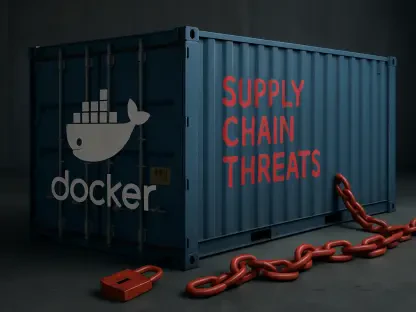Listen to the Article
Cloud cost management isn’t just an IT side project anymore—it’s a core part of businesses’ budgets. Cloud is now mission-critical, so companies are feeling the heat to keep spending in check and get the most out of what they use. The latest Forrester Wave™ report highlights how this market is evolving rapidly, with sharper enterprise demands around visibility, unit economics, and automation. This article breaks down what’s driving this market shift, what enterprises need from modern cloud financial management platforms, and how the top vendors are evolving to meet these demands.
Why the Cloud Cost Management Market Is Reshaping Itself
There are three big reasons why cloud cost management is blowing up right now:
Cloud is foundational: Companies lean heavily on public cloud, so managing those costs well isn’t optional.
Economic caution is amplifying scrutiny: With the economy feeling shaky, CFOs and CIOs are keeping a close eye on cloud spending and want real proof it’s worth it.
Vendors Are Racing to Meet Expanding Cloud Cost Management Demands
The hybrid cloud management market is contracting: Businesses are ditching clunky hybrid tools for slicker, more focused cost management solutions that work across multiple clouds and SaaS.
This shift has prompted pure-play cloud financial management providers and cloud security, observability, and container platform vendors to deepen or introduce cost management capabilities. Managed service providers and systems integrators are also expanding their financial management partnerships, reflecting the enterprise demand for broader, integrated solutions.
4 Essentials Every Cloud Cost Management Strategy Needs
As FinOps grows, companies want more than just cost reports—they want tools that help make smarter spending choices. Today’s leaders need more than basic cost visibility; they need actionable, business-aligned insights. Here are the four defining attributes buyers should prioritize:
1. Comprehensive Multicloud Visibility and Optimization
Modern enterprises rarely operate in a single-cloud environment. Most services are distributed across Amazon Web Services (AWS), Microsoft Azure, Google Cloud, and multiple software-as-a-service (SaaS) platforms. Having real-time, clear views across all your cloud platforms isn’t a nice-to-have anymore—it’s a must-have.
While many vendors can now deliver visibility dashboards and optimization tips, the differentiators lie in the depth and breadth of these recommendations. Top tools don’t just handle the basics; they dig deep into everything from Kubernetes to serverless stuff to keep costs tight.
Key takeaway: You’re already behind if your vendor lacks multicloud visibility and optimization.
2. Cloud Unit Cost Economics and Business Alignment
Companies increasingly want to link their cloud spending directly to business results, not just IT metrics. Yet, few cloud cost management platforms today can calculate cloud unit costs out of the box. Knowing how much each app or team costs is key to convincing execs and making more brilliant tech moves. The goal is to track and manage cloud costs not just by service, but by business outcome. Even though it’s tricky to get ready-made unit cost features, companies should bet on tools working hard to make this happen.
Key takeaway: Cloud spend accountability is moving beyond IT. Financial insights should be built into daily engineering and operations decisions.
3. Integrating Costs Beyond Infrastructure as a Service
Today’s enterprise technology stack includes not just public cloud infrastructure, but also software-as-a-service, platform-as-a-service, data platforms like Snowflake, and orchestration tools like Terraform. Modern cloud cost management platforms must ingest and analyze costs across all these services for an actual total cost of ownership view.
Top platforms smoothly connect with many tools and services, even if they don’t have a built-in connection yet. This allows organizations to build holistic cost management practices encompassing infrastructure and business-critical SaaS services.
Key takeaway: The definition of “cloud costs” is expanding—your strategies and tools should, too.
4. Automation for Optimization and Policy Enforcement
Seeing what’s going on helps, but those insights often just sit there unused without automation. Leading cloud financial management platforms now integrate automated optimization features—from auto-stopping idle resources to recommending workload placements based on real-time pricing and performance metrics.
Automation also extends to governance. Usage policies, permissions management, and pre-defined optimization workflows help organizations maintain cost discipline without slowing down developers.
Key takeaway: Look for tools that close the loop between cost insights and automated actions.
Comparing the Leading Cloud Cost Management Platforms
The latest Forrester Wave™ report highlights several leaders and a strong cloud cost management and optimization market. Here’s a brief look at how key players stack up:
IBM delivers one of the most complete cloud financial management solutions, combining Cloudability and Turbonomic, though customers await its promised unified portal. It excels in optimization and automation but lags in permissions flexibility.
Broadcom (CloudHealth) remains a stalwart, though customer concerns about innovation following its VMware acquisition persist. It is strong in reporting and permissions but trails in optimization breadth.
Flexera stands out for its integration of information technology asset management and pricing flexibility. However, it risks falling behind without broader innovation beyond IT asset management-centric cost control.
Harness offers market-leading features like auto-stopping and cluster cost breakdown. It excels in usability but needs stronger platform recommendations and forecasting.
Morpheus Data differentiates with multicloud automation and flexible packages, though its dedicated cloud cost management solution is still early in maturity.
CloudBolt benefits from its bidirectional integrations and hybrid cloud management capabilities, but it needs to enhance the depth of its monitoring and optimization.
CloudZero leads in application programming interface integrations and unit cost economics, but needs to improve partner relationships and on-premises cost management capabilities.
Challenger Vendor Summaries
While a handful of vendors lead the cloud cost management market, several challenger providers offer viable, specialized alternatives for enterprises with unique needs. These vendors often excel in niche areas like hybrid infrastructure management, public sector compliance, or partner ecosystem. However, they may lag behind market leaders in innovation, automation, or multicloud optimization depth. Here’s a look at how these challenger providers position themselves today:
Nutanix
Nutanix maintains strong customer support, with a Net Promoter Score of 92. The company has repositioned its focus on hybrid cloud management through Nutanix Cloud Manager and a consultancy-based cloud financial management service called FinOps-as-a-Service. While it excels in plans to integrate security and cloud management capabilities, it lags in roadmap delivery and product innovation, with no new cost management and optimization features planned beyond basic maintenance. Nutanix is a solid choice for existing customers, but it lacks differentiation in core cloud financial management.
NetApp
NetApp offers a capable, basic cloud financial management solution through its CloudCheckr and Spot acquisitions, but continues to delay the launch of a unified cloud management portal. While it maintains a strong channel presence and popular white-label capabilities, the platform lags in Google Cloud optimization and support for multi-account enterprise environments. NetApp remains a good fit for managed service providers and organizations that are heavily invested in Amazon Web Services (AWS) and Microsoft Azure.
Kion
Kion stands out in highly regulated industries, offering one of the few on-premises cloud financial management deployments suitable for meeting Federal Risk and Authorization Management Program and National Institute of Standards and Technology-based security requirements. The platform delivers strong billing administration and policy management but lacks innovation in capacity planning, cloud optimization recommendations, and Google Cloud support. Kion best suits public sector organizations and enterprises with strict regulatory mandates.
Virtana
Virtana specializes in hybrid infrastructure cost management and observability, but falls short in key cloud financial management areas such as resource discovery, billing analytics, and cost optimization assessment. Customers appreciate its predictable, flat-rate pricing model, though product depth and innovation remain challenges. Virtana is most appropriate for organizations already invested in the Virtana infrastructure management ecosystem.
The Bottom Line
Cloud financial accountability is a strategic imperative as the cloud becomes more embedded in business-critical operations. Enterprises no longer need cost reporting; they require proactive optimization, business-aligned unit economics, and automation that drives continuous value.
The cloud cost management and optimization market is maturing fast, with clear differentiators emerging. Business-to-business technology buyers should seek platforms that offer:
Complete multicloud visibility and optimization;
Integrated business metrics and unit cost analytics;
Cost management beyond infrastructure as a service to include software as a service, platform as a service, and data platforms;
Automation to operationalize cost insights at scale.
These capabilities will separate the cost leaders from the cost laggards in a market defined by rising costs, economic scrutiny, and intensifying competition.









